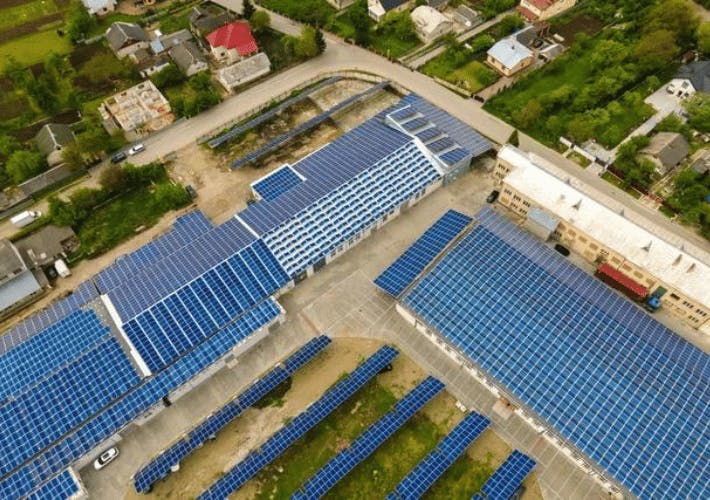The recent movie ‘Don’t Look Up,’ which uses an impending comet collision as a metaphor for the ongoing climate crisis, has caused quite a stir. It’s satirical depiction of our inertia and a need to maintain a positive composure during crises begs a question: If our response was falling disproportionately short compared to the magnitude of this crisis, would we realize it in time and be able to change course?
For instance, look at the AIA 2030 Commitment report for the year 2020. The collective pEUI reduction of 51.3% fell way short of the 80% reduction target. Of the 378 companies that reported building performance data, only 15 companies met this target. Only 4.3% of the reported gross square feet meet the 80% pEUI reduction target.
Project and firm performance could be doing better but all projects without energy-simulation-based pEUI data are assumed to be minimally complying with energy code prescriptions. Could some automation in the simulation and the reporting process close this gap and provide a more complete picture of where we stand regarding this ‘Challenge?’
Understanding Building Performance Modeling
Building performance modeling during design phases has the potential to help us establish target performance and quantitatively measure design progress. But how accurate are these models, even the predictive ones?
“A model is a lie that helps you see the truth” – H. Skipper
Let’s explore this thought briefly. Building energy modeling happens for several reasons. ASHRAE’s Standard 209-2018 ‘Energy Simulation Aided Design for Buildings except Low Rise Residential Buildings’ for example breaks down energy modeling into 11 modeling cycles across design, construction, and operations phases:
- Simple box modeling
- Conceptual design modeling
- Load reduction modeling
- HVAC System Selection Modeling
- Design Refinement
- Design Integration and Optimization
- Energy Simulation-Aided Value Engineering
- As-Designed Energy Performance
- Change Orders
- As-Built Energy Performance
- Post-Occupancy Energy Performance Comparison

The AIA 2030 Commitment
The AIA 2030 Commitment is a reporting framework for signatories to the voluntary Architecture 2030 Challenge to demonstrate annual progress towards designing buildings incrementally nearing net-zero energy performance by the year 2030.
EUI stands for the energy use intensity of buildings with units kBtu/ft²/year. It is analogous to the MPG rating of a car. pEUI stands for predicted energy use intensity, mainly used for projects in design employing energy simulation for optimization of energy performance.
Predictive modeling is typically conducted by a building performance simulation professional and is often used as a compliance check in the later stages of design. When used exclusively in these stages, design teams can miss key opportunities to enhance the building project. Predictive modeling has the most impact when implemented in the early design phases, often based on assumptions considered reasonable for the program. Even when they are useful for design decision making, assumptions for typical weather conditions or plug loads or the number of operating hours per week may materialize differently, causing the post-occupancy metered energy performance to differ from predictions. Accuracy, while important, can be traded within reason for usefulness. Using simulations early in the design process helps design teams make critical decisions that can positively impact first costs, operational costs, and energy-related environmental impacts for the life of the building.
You can often hear designers say they are only giving the owner what they asked for. However, in the same way not all designers are created equal, not all building owners have the same project goals. Some owners are enlightened; they come to designers with a clear vision of what the project should accomplish and exemplify. But they are rare. The rest of the owners come to designers for their specialization in problem solving and for their help with filling in the pieces of a broader outline of a vision. Energy modeling can be a tool used by the designers to help owners visualize how their program interacts with the climate of the location; what end uses can be high impact areas; and what strategies can cost-effectively address these high impact areas.

Take the case of a zero energy building, for instance. Imagine the questions a designer may have at the beginning of project planning.
If I design just to minimally comply with the energy code, how many photovoltaics (PV) will be needed to get to zero energy performance?
If I worked backwards and estimated the PV budget of the site first, by how much would I need to exceed the energy code to fit within the budget?
In the latter case, what strategies can get the design to the target?
If all the needed PV cannot fit on the site, how much renewable energy must be procured from offsite sources?
Only quantitative and predictive building performance modeling can answer such questions and help with design decision making.
Zero Energy Building
Generally speaking, a zero energy building produces enough renewable energy to meet its own annual energy consumption requirements, thereby reducing the use of nonrenewable energy in the building sector. This definition also applies to campuses, portfolios, and communities.
Source: Energy.gov
Matching Building Operations with Design Intent
After the designers and constructors make the owner’s vision a reality, is it all smooth sailing? It depends on how closely the operations align with the design intent. Buildings can be designed to remain occupant proof, but it is only fair to give occupants some freedom to alter their built environment to suit their individual needs.
Accounting for occupant behavior does make design phase building performance modeling more challenging. But what if we actively accounted for occupant behavior in our models, and reported pEUI in ranges rather than absolutes? This would make room for the end users for whom the design will serve and address some of the anxiety related to the accuracy of predictions.

Conclusion
The AIA 2030 Commitment is a robust program with 900+ signatories and growing. The AIA calls it “an actionable climate strategy that gives us a set of standards and goals for reaching net zero emissions in the built environment.”
With help from energy codes, green certifications, and automation in design tools, the next eight years hold an immense opportunity for the design industry in integrating building performance and quantitatively demonstrating that net zero emissions are achievable.
